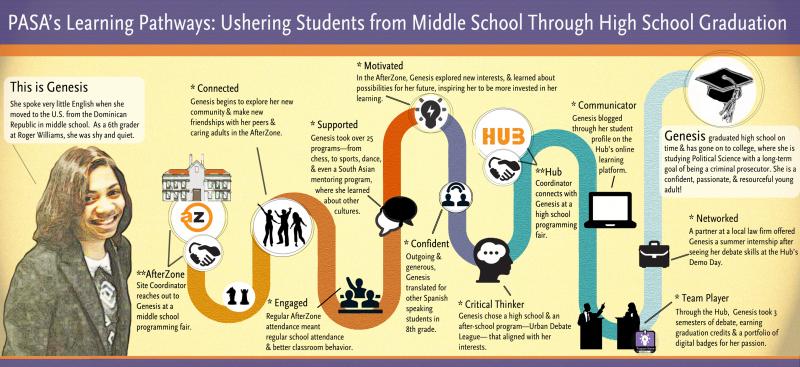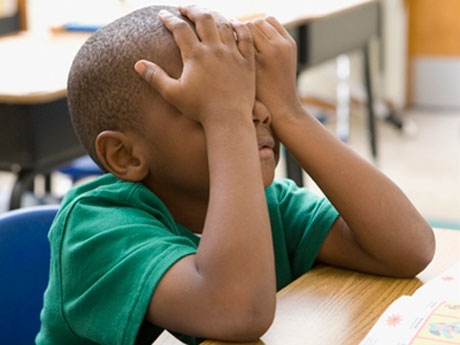
1. What Does a Learning Pathway Look Like?
We talk a lot about learning pathways—after-school interest tracks that can propel young people through their in-school experience and to graduation—but sometimes it’s difficult to fully understand what an after-school or expanded learning pathway might actually look like. We’ve created this handy infographic inspired by one student’s true story to illustrate how after-school programs can support, motivate, and inspire young people to not only get through some of the toughest school years, but to excel in those years, making them better prepared for their future.
2. Five Steps to Foster Grit in the Classroom, From Edutopia
The word “grit” suggests toughness and determination. The question is how do we get students to value struggle, failure and perseverance in our classrooms? ASCD recently published Thomas Hoerr’s short but great book on this subject, Fostering Grit. The subtitle “How do I prepare my students for the real world?” reflects the fact that our students will encounter challenging work and problems to solve. If this is the case, our classrooms should mirror that process and prepare our students to be successful in meeting these challenges. You might consider this a critical 21st century skill, which means that we need to scaffold the related skills we’re teaching our students.
3. Our 2014 Resolution for the Afterschool Movement, From Huffington Post
By Jodi Grant, Executive Director of the Afterschool Alliance
A lot of lawmakers seem to view afterschool as if it were simply an extra dose of class time. Indeed, it can be that — but it’s so much more. Afterschool absolutely helps students with their academics. But equally important, it gives them a chance to grow in many other ways — to get meaningful exercise, to learn teamwork and to resolve conflicts, to understand the benefits of healthy eating, to steer clear of dangerous behaviors like drugs and crime. Those are very real and important components of afterschool that aren’t necessarily reflected in grades or test scores.
We’re making a long-term commitment to change the dynamic and send that message to policymakers, funders, and everyone who is concerned about our children’s and our country’s future. Keep reading…



